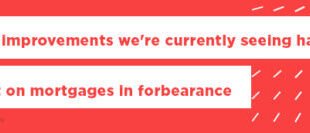
Before jumping headfirst into the housing market, a prospective homebuyer will have a general idea of where they want to live, how they want to live and how much home they can afford. And when you start to shop around for a lender and look at mortgage options, you’ll begin to hear the terms pre-approval and pre-qualification.
They sound interchangeable, but they have different meanings when it comes to the home buying process. Here’s what you need to know about the differences between getting pre-qualified and getting pre-approved.
What is pre-qualification?
A pre-qualification is a best guess of what you can most likely afford. Why is it just a guess? Because it’s based on what you verbally tell your lender about your income, and even if you are 100% truthful, it doesn’t show the full picture.
Think of a mortgage pre-qual as a nice ballpark number to have if you’re just casually shopping. Just don’t consider it as a guaranteed amount that you’ll eventually be approved for.
What is pre-approval?
A pre-approval is the real deal as it’s the result of a thorough examination of your credit history and actual financial documentation you provide. The mortgage pre-approval is an underwritten estimate of how much home you can afford and how much debt you can take on.
Pre-approvals are way stronger than pre-qualifications. And once the lender has determined how much they’re willing to loan you, you’ll receive a pre-approval letter indicating the amount. Real estate agents and sellers both prefer working with pre-approved buyers because it shows that you’re committed to buying a home and that you have the backing to make good on any offer you put down (within the pre-approved amount). Not only does a pre-approval save you time, but it’s also a great bargaining chip when you’re buying in a competitive market.
Getting a mortgage pre-approval
Before speaking to a lender about getting pre-approved for a mortgage, you’ll want to start collecting some information. The lender will want proof of income, liquid assets and debts. Let’s look at each of these more closely:
- Income. More than just your annual pay, income can also include (if you have documentation) freelance income, income from rental properties, alimony, child support, disability payments, retirement benefits and investment returns.
- Liquid Assets. These are anything that can be turned into cash pretty quickly, like checking and savings accounts. Since you can cash out stocks, money market funds and other investments fairly quickly, they’re also considered liquid assets.
- Debts. Generally, this is how much you owe in recurring debt, like car payments and student loans. Fluctuating debt like credit card bills is not as important, but your lender will want to know how much credit is available to help determine how likely it is that you’ll go deeper into debt.
Start gathering these documents
Besides those big-picture details, your lender — or the underwriter — will ask you for supporting paperwork. Depending on your unique financial situation and your lender’s approach, you may have to provide additional documentation, but we think that the following list is a good jumping-off point for most prospective homebuyers.
- Social security number (you don’t need to have the physical card on hand)
- W-2 forms for proof of income for the past two years. If you are self-employed, consider documenting income history for the past three years.
- 1040 federal tax returns for the last two years
- Recent pay stubs for the previous two months covering at 30 days YTD income
- Government-issued identification, like a copy of driver’s license, US passport or Military ID
- Proof of down payment or a “gift letter” if a family member is gifting you some money towards the down payment amount
- Bank statements showing checking, savings, money markets and other liquid assets like stocks, IRAs and mutual funds.
- Credit history (You’ll have to sign a release form allowing your lender to pull your credit report)
Ready to get pre-approved?
While a pre-qualification may get you thinking about your options, a pre-approval will tell you just how much home you can afford. And you don’t have to choose one or the other: you can get pre-qualified as you start house hunting, and then get pre-approved as you get more serious and want to lock in an interest rate.
See? You don’t need a thesaurus to understand all the mortgage jargon. You just need a good mortgage professional to help. Find a loan officer in your area to zero in on what your home buying budget should be.



